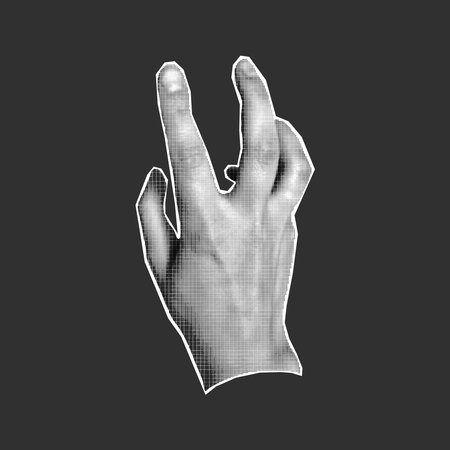Origins and Early Traces of Palmistry in Britain
Long before palmistry found its way into modern British living rooms, its roots were gently sown across the misty landscapes of the British Isles. If you close your eyes and listen deeply, you might still hear echoes of ancient wisdom humming through the land. In the age of Druids—mystics who danced with nature’s secrets—hands were more than tools for toil; they were maps to the soul’s journey. These early spiritual custodians believed that every line etched on a palm whispered stories from the otherworld, connecting fate and character in a tapestry only the truly attuned could decipher.
As Roman sandals pressed into British soil, they brought with them not only roads and rule but also a fascination with the arcane arts. Roman scholars, ever curious about destiny’s design, mingled their knowledge of chiromancy with local folklore. By firesides and in forest clearings, tales spread of those able to glimpse fortune’s path simply by studying the curve of a lifeline or the swirl of a fingertip.
Through centuries, these mystical practices wove themselves into the fabric of British storytelling. Folk tales abounded with wise women and cunning men who could divine secrets from an outstretched hand. Palmistry became both a source of wonder and wariness—a hidden art passed down quietly, surviving beneath layers of scepticism and superstition that marked medieval times. In this way, the foundations of palmistry in Britain were set: not as a passing fancy, but as an enduring thread linking ancient rites, Roman curiosity, and the timeless British love for stories that bridge worlds seen and unseen.
2. Palmistry in Mediaeval and Tudor Britain
Step into the flickering candlelight of a mediaeval hall or wander through the vibrant hustle of a Tudor marketplace, and you’ll find palmistry woven into the very fabric of British society. During these centuries, palm reading—often called chiromancy—was a practice shrouded in both fascination and fear. In the courts of kings and queens, learned astrologers and wise women would trace lines upon palms, whispering secrets about fate, love, and destiny. Yet this was an era where superstition reigned as much as reason, and so palmistry danced on a knife’s edge: sometimes celebrated for its perceived wisdom, other times condemned as heresy or witchcraft.
The duality of palmistry’s reputation can be glimpsed in the roles it played across different social spheres:
Setting |
Status of Palmistry |
Typical Practitioners |
|---|---|---|
| Courtly Circles | Revered curiosity; sometimes fashionable among nobles | Scholars, astrologers, cunning folk |
| Village Fairs & Marketplaces | Sought after for entertainment and guidance; tinged with suspicion | Travelling Romani, local wise women |
| Church & Religious Orders | Often forbidden or condemned as pagan or occult | N/A (sometimes practiced in secret) |
Palmistry’s journey during these times was marked by paradox. It could be a parlour amusement at court one moment and an accusation that led to persecution the next. The stories passed down from this era are full of whispered fortunes and shadowy warnings—a testament to Britain’s complex relationship with the mystical arts. In every telling, though, there remains an unmistakable sense of wonder: the belief that within the palm lies a map to one’s destiny, waiting to be read beneath the wavering glow of torchlight or the curious gaze of a Tudor lord.

3. Victorian Enthusiasm and the Golden Dawn
Step into a flickering candle-lit parlour in Victorian Britain, where lace-draped tables and heavy velvet curtains set the scene for evenings of intrigue and wonder. It was here that palmistry truly flourished, woven seamlessly into the very fabric of spiritualist gatherings that captivated society’s imagination. This was an era intoxicated by curiosity—where science brushed shoulders with mysticism, and ordinary citizens sought answers beyond the veil.
The rise of the Hermetic Order of the Golden Dawn marked a new chapter for British palmistry. This influential society, whose members included poets, scholars and visionaries, blended ancient esoteric wisdom with modern psychological insight. Palm reading evolved from a parlour amusement to a respected practice, one imbued with symbolism and ritual. The Golden Dawn encouraged not just fortune-telling but deep soul-searching—a journey into self-discovery mapped out on the palm’s intricate lines.
Victorian palmists were part showman, part philosopher. Their readings combined theatrical flair with scholarly references; they quoted Aristotle as readily as they invoked the mysteries of the East. In these circles, palmistry was not merely entertainment—it was a gateway to understanding human nature and destiny, a bridge between rational thought and the unseen world.
The popularity of palmistry during this period reflected Britain’s shifting attitudes towards spirituality and selfhood. As industrialisation altered daily life, Victorians yearned for meaning amid rapid change. Palmistry offered both comfort and excitement: scientific enough to seem credible, yet mysterious enough to inspire awe. It became a ritual of connection—between people, between past and future, between body and spirit.
Thus, in the golden glow of Victorian drawing rooms, palmistry was transformed—not just preserved as a curious relic, but revitalised as a living practice that invited seekers to look deeper into their own hands and hearts.
4. Palmistry in British Popular Culture
As the mists of time parted and Victorian Britain pulsed with innovation and intrigue, palmistry emerged from shadowy corners into the heart of popular culture. No longer confined to secretive parlours or scholarly circles, the art of hand-reading found its way onto public stages, into bustling music halls, and between the covers of beloved literary works. The palmists—once mystical figures—became both entertainers and confidantes, reading fortunes for the hopeful and the curious alike.
The Music Hall Phenomenon
During the late 19th and early 20th centuries, music halls were the vibrant pulse of British entertainment. Amidst laughter, song, and spectacle, palmists would take to the stage, weaving stories from the lines on volunteers’ hands. These readings offered a tantalising blend of suspense and solace, sparking wonder in audiences eager for glimpses into their destinies. For many, a palm reading became a rite of passage—part theatre, part personal revelation.
Palmistry in British Literature
Writers across Britain also wove palmistry into their tales. From Victorian novels to Edwardian short stories, characters often encountered enigmatic palmists whose insights guided—or misled—them on their journeys. Authors such as Charles Dickens and Thomas Hardy referenced palm reading to evoke mystery or to explore fate’s caprices within ordinary lives. Through literature, palmistry threaded itself into national folklore: a symbol of hope, curiosity, and sometimes caution.
Palmistry’s Roles in British Society
| Role | Description | Examples in Culture |
|---|---|---|
| Folklore | Tales passed down through generations about gifted readers and prophetic hands | Rural legends; superstitions about certain hand markings |
| Entertainment | Palmists performing at fairs, carnivals, and music halls for delight and amusement | Music hall acts; seaside fortune-telling booths |
| Confidante | Palmists acting as trusted listeners for personal hopes and fears | Private consultations; intimate gatherings in drawing rooms |
A Place in Everyday Life
By the mid-20th century, palmistry had secured its seat not just as spectacle but as a gentle companion in everyday living rooms across Britain. Whether whispered about during tea or explored at parties among friends, it bridged worlds: old beliefs meeting new dreams. In this ever-evolving cultural tapestry, palmistry remained steadfast—a practice where intuition met storytelling, offering guidance to generations who dared to look within their own palms.
5. Scepticism, Science and the Modern Rebirth
As the 19th and 20th centuries unfurled, Britain’s fascination with palmistry faced formidable waves of scepticism. Rational minds, steeled by the rise of scientific inquiry and Victorian empiricism, often dismissed palm reading as fanciful superstition or parlour trickery. Yet, in true British fashion, palmistry did not quietly fade into obscurity. Instead, it evolved—rubbing shoulders with emerging fields such as psychology and even forensic science. Pioneers like William John Warner, better known as Cheiro, brought a sense of legitimacy to palmistry by weaving together ancient wisdom with modern analytical techniques. In drawing-room gatherings and smoky Soho cafés alike, palmists exchanged interpretations that echoed Jungian archetypes and Freud’s theories of the subconscious. For many Britons, palmistry became less about fortune-telling and more about self-reflection—a science of the self, a gentle art for those seeking meaning in the maze of modern life. Today, palmistry endures on both high streets and holistic retreats across the UK, cherished not just for its mystical allure but also for its ability to spark personal insight and mindful meditation. As we reach out our hands—literally and figuratively—we find that this old practice has gracefully survived scepticism, adapting to the rhythms of contemporary living while still honouring its ancient roots.
6. Palmistry Practice in Today’s British Living Rooms
The art of palmistry, once whispered between the drapes of Victorian parlours and illuminated by candlelight, is experiencing a vibrant renaissance across Britain’s living rooms. No longer confined to the fringes or private chambers, palm reading has stepped confidently into the heart of contemporary British homes, reimagined for a new generation seeking meaning and connection. Whether it’s teens scrolling through TikTok tutorials on reading their fate lines, or friends gathering in sunlit gardens with mugs of tea and open palms, the tradition has shed its cloak of secrecy for a spirit of community and curiosity.
This revival is as much about intuition as it is about tradition. Modern Britons are blending ancient techniques with personal insight—interpreting heart lines not just as predictions, but as invitations to self-reflection and soulful conversation. The living room becomes a sacred space where stories unfold: an aunt recalling her first fortune told at a seaside fair, or a guest sharing how their lifeline inspired a brave decision. These moments, woven with laughter and genuine wonder, echo the historical journey of palmistry from mysterious origins to everyday ritual.
Social media platforms play their part in this evolution. Hashtags like #PalmistryUK and viral reels demystify the practice, making it accessible for anyone with curiosity and a willing palm. Yet, beneath the digital veneer remains a distinctly British appreciation for storytelling—a wink of humour here, a sprinkle of folklore there—that ensures each reading feels both rooted in heritage and refreshingly personal.
Today’s palmistry gatherings often merge the mystical with the practical. Between scones and biscuits, old wives’ tales mingle with snippets from contemporary guides. Friends compare fate lines by the fire while discussing life goals, weaving ancient symbolism into modern life decisions. It’s less about fortune-telling now and more about connecting: to oneself, to others, and to something timeless that hums just beneath the surface of everyday existence.
Perhaps this is why palmistry endures in Britain—ever evolving yet always familiar. Each session is uniquely shaped by those present; every hand read is another chapter in an ongoing story. As British homes open their doors once again to this ancient art, they invite not just predictions of what might be, but a deeper journey into who we are becoming—personal, intuitive, and ever unfolding.


